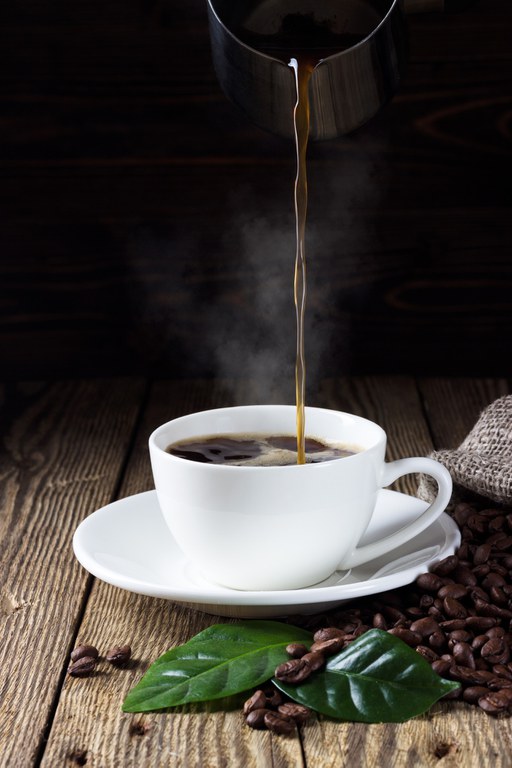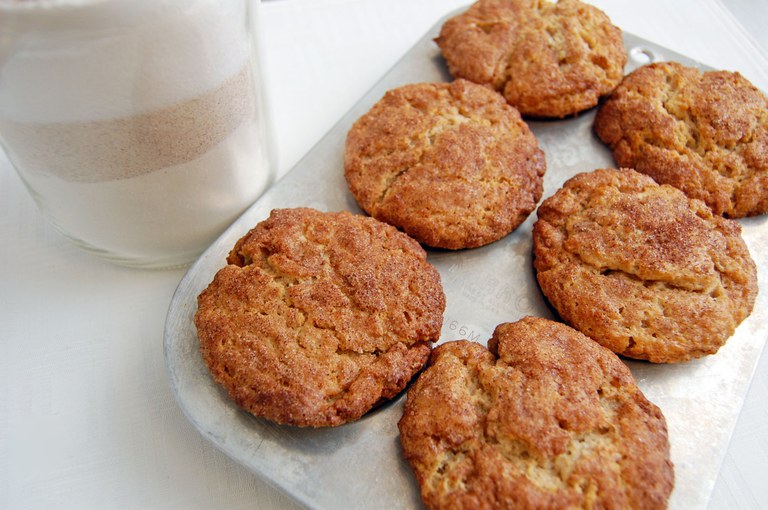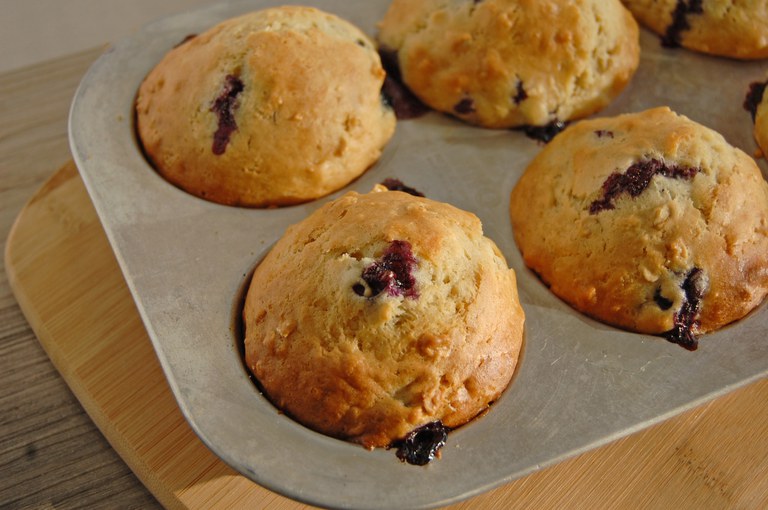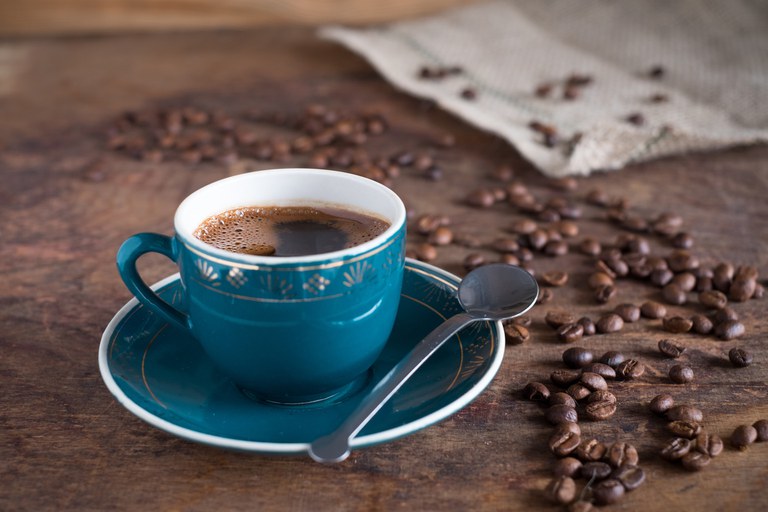Coffee Time! Exploring a Favorite Beverage (FN1894, July 2018)
Availability: Web only
Coffee’s Legendary Beginnings
An Ethiopian goat herder noticed when his goats consumed berries from a certain bush, they were awake and restless all night. Word about the energizing coffee berries spread east to the Arabian Peninsula, Europe and the U.S. As word about coffee grew, so did the popularity of coffee houses. Coffee houses were a place for people to drink coffee, listen to music, play games and converse with one another. The traditions of coffee houses continue today.
Coffee and Health
Many studies have explored the health benefits and risks of coffee. These are a few of the findings.
Cardiovascular Health
Coffee filters remove the lipid-raising agents in coffee. Instant coffee does not contain the lipid-raising agents. Higher consumption of coffee (more than 5 cups/day) is linked with higher blood lipid levels.
Blood Pressure
Coffee may result in a short-term increase in blood pressure; however, no long-term increase occurs in blood pressure in individuals with or without high blood pressure when they consume coffee in moderation. Individuals with uncontrolled high blood pressure should avoid large amounts of coffee (more than 5 cups/day) because this can increase blood pressure.
Metabolic Syndrome
Metabolic syndrome is a cluster of conditions that are linked with the development of heart disease and Type 2 diabetes, including obesity, dyslipidemia (abnormal blood lipid levels), high blood pressure and increased blood sugar. Coffee contains complex molecules that assist in preventing cardiovascular events and high blood sugar.
Diabetes
Coffee may lower the risk of Type 2 diabetes for men and women. Decaf coffee has the same effects as regular coffee.
Parkinson’s Disease
Coffee may reduce or delay disease development and improve symptom management of Parkinson’s disease, which is a neurodegenerative disorder. According to some research, caffeine in coffee protects part of the brain affected by the disease.
Osteoporosis
Moderate caffeine consumption of 3 to 5 cups of coffee per day is not linked with harming bones. According to some research, adding 1 to 2 tablespoons of milk to your cup of coffee offsets the osteoporotic risk of coffee. A calcium-rich diet includes consuming 1,000 milligrams (mg) of calcium for individuals younger than age 50 and 1,200 mg of calcium per day for individuals older than 50.
Combatting Negative Effects
Although coffee in large amounts may have some negative effects, you can try strategies to reduce these outcomes. Drink coffee in moderation (3 to 5 cups per day). Consume a diet rich in calcium to prevent osteoporosis. Drink filtered coffee to avoid coffee’s lipid-raising agents.
Characteristics of Coffee Bean Types
Arabica beans have a subtle flavor, and the beans are more expensive to produce. Robusta beans are higher in caffeine and often possess a bitter taste. The beans are less expensive to produce. The coffee we purchase in stores often is a blend of the two varieties. Using more Robusta beans results in a rougher taste that is more bitter.

Coffee Roasts: What’s the Difference?
Several different coffee roasts are available and they differ in color, flavor and caffeine content. Which is your favorite roast?
Light Roast
• Brown; no oil on the bean surface
• Grainy taste, increased acidity
• More caffeine content than in darker roasts
Medium Roast
• Brown; no oil on the bean surface
• More flavor, aroma and acidity than in light roasts
• Caffeine content lower than in light roast
Medium-dark Roast
• Roasted at higher temperatures, resulting in a darker color and minimal oil on the bean surface
• Tastes slightly spicy, depending on the roasting process
Dark Roast
• Dark or black; oil on the bean surface
• Bitter, smoky or even burned taste
• Contains least amount of caffeine, compared with light and medium roasts
Espresso
• Caffeine-concentrated form of coffee
• 1 ounce = 63 milligrams caffeine. An 8-ounce cup of coffee typically has 95 to 128 milligrams caffeine.
• Used to make cappuccino, Americano, mocha and latte coffee drinks
Coffee beverages vary widely in calorie, caffeine and sugar content. Many coffee shops provide nutritional information online or in printed material. See Table 1 to see the nutritional profile of popular commercial coffee beverages and Table 2 to see how added ingredients at home or at a restaurant affect the nutritional profile of coffee. Be sure to read and compare Nutrition Facts labels on food packages to learn about your choices.
As shown in Table 3, the brewing method affects caffeine, antioxidant and heart health benefits. The values decrease from top to bottom. For example, the greatest caffeine content is present in standard drip and the lowest level (based on the examples shown) is present in instant coffee.
Table 1. Calorie, Caffeine and Sugar Content of Popular Coffee Beverages.
|
Drink Name (Grande size: 16 oz.) |
Calories |
Caffeine (mg) |
Sugar (g) |
|
Pike Place Roast (black) |
5 |
310 |
0 |
|
Iced Coffee (sweetened, no milk) |
80 |
165 |
20 |
|
Cappuccino (2% milk) |
120 |
150 |
12 |
|
Café Latte (2% milk) |
190 |
150 |
18 |
|
Iced Vanilla Latte (2% milk) |
190 |
150 |
28 |
|
Caramel Macchiato (2% milk) |
250 |
150 |
33 |
|
Cinnamon Dolce Latte (2% milk, |
330 |
150 |
41 |
|
Café Mocha (2% milk, whipped cream) |
360 |
175 |
44 |
|
White Chocolate Mocha Frappuccino (whole milk, whipped cream) |
520 |
90 |
64 |
Source (NDSU Extension does not endorse commercial products or companies even though reference may be made to trade names, trademarks or service names.)
Table 2. How Added Ingredients Affect Coffee’s Nutritional Profile.
|
Ingredient |
Calories |
Caffeine (mg) |
Sugar (g) |
|
Black coffee (8 ounces) |
5 |
95 |
0 |
|
Black decaf coffee (8 ounces) |
5 |
3 |
0 |
|
Espresso (1 ounce) |
3 |
63 |
0 |
|
2% cow’s milk (2 tablespoons) |
18 |
0 |
0 |
|
Heavy cream (2 tablespoons) |
51 |
0 |
0 |
|
100% pure maple syrup (1 teaspoon) |
17 |
0 |
4 |
|
Honey (1 teaspoon) |
21 |
0 |
5 |
|
Cinnamon (½ teaspoon) |
3 |
0 |
0 |
Table 3. How Brewing Method Affects Caffeine, Antioxidant and Heart Health Benefits.
|
|
Caffeine Content |
Antioxidant Content |
Heart Health |
|
|
Standard Drip Brew |
Instant Coffee |
Instant Coffee |
|
|
French Press |
French Press |
Standard Drip Brew |
|
|
Keurig |
Standard Drip Brew |
Keurig |
|
|
Cold Brew |
Keurig |
French Press |
|
|
Instant Coffee |
Cold Brew |
Cold Brew |
Recipes
Here are a couple of recipes that go well with a cup (or two) of your favorite coffee.
Key to abbreviations: c. = cup • oz. = ounce • tsp. = teaspoon • Tbsp. = tablespoon • lb. = pounds • g = grams • mg = milligrams

Snickerdoodle Muffins
1 c. (2 sticks) margarine
1¼ c. Greek yogurt (plain, nonfat)
2 eggs
2 tsp. vanilla extract
1 c. sugar
¾ tsp. baking soda
¾ tsp. baking powder
¾ tsp. cream of tartar
¾ tsp. ground nutmeg
½ tsp. ground cinnamon
1½ c. all-purpose white flour
¾ c. whole-wheat flour
Topping: 5 tsp. sugar plus 1 tsp. ground cinnamon
1. Preheat oven to 350 F.
2. Combine wet ingredients (margarine, Greek yogurt, eggs and vanilla) in one bowl.
3. Combine dry ingredients (sugar, baking soda, baking powder, cream of tartar, ground nutmeg, ground cinnamon, all-purpose white flour and whole-wheat flour) in a separate bowl.
4. Fold the dry ingredients into the wet ingredients until dry ingredients are well-mixed. Make sure not to overmix muffins; lumpy batter is OK.
5. Grease muffin tins or use paper liners.
6. Scoop muffin batter into muffin tins to make about 22 muffins.
7. Stir together additional sugar and cinnamon and sprinkle a portion on each muffin.
8. Bake for 20 to 22 minutes or until they are golden brown.
Makes approximately 22 servings. Each serving has 180 calories, 9 g fat, 3 g protein, 23 g carbohydrate, 1 g fiber and 130 mg sodium.

Blueberry and Oatmeal Power Muffins
2 c. all-purpose flour
1 c. oats, quick or regular
⅔ c. sugar
1 tsp. baking powder
1 tsp. baking soda
½ tsp. salt
1½ c. honey nonfat Greek yogurt
2 large eggs, lightly beaten
4 Tbsp. unsalted butter, melted and slightly cooled
1 tsp. vanilla extract
1 c. fresh blueberries
1. Heat oven to 350 F.
2. Coat muffin tin with cooking spray or liners.
3. Combine flour, oats, sugar, baking powder, baking soda and salt in a bowl.
4. Combine yogurt, eggs, butter and vanilla in a second bowl.
5. Fold yogurt mixture into dry mixture; stir to combine completely.
6. Gently fold in blueberries.
7. Spoon into muffin tins.
8. Bake until top is golden and a toothpick inserted in center comes out clean, approximately 20 to 25 minutes.
Makes 16 servings. Each serving has 170 calories, 4.5 g fat, 4 g protein, 29 g carbohydrate, 1 g fiber and 210 mg sodium.

JULY 2018


